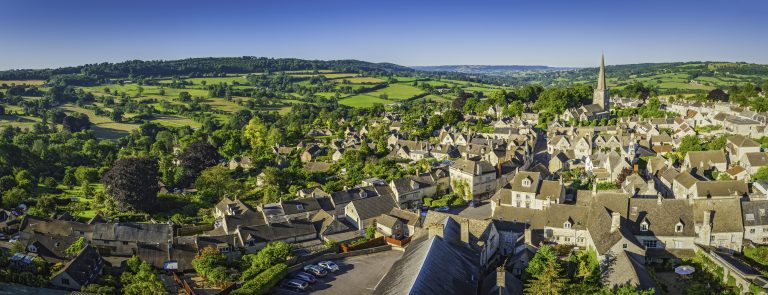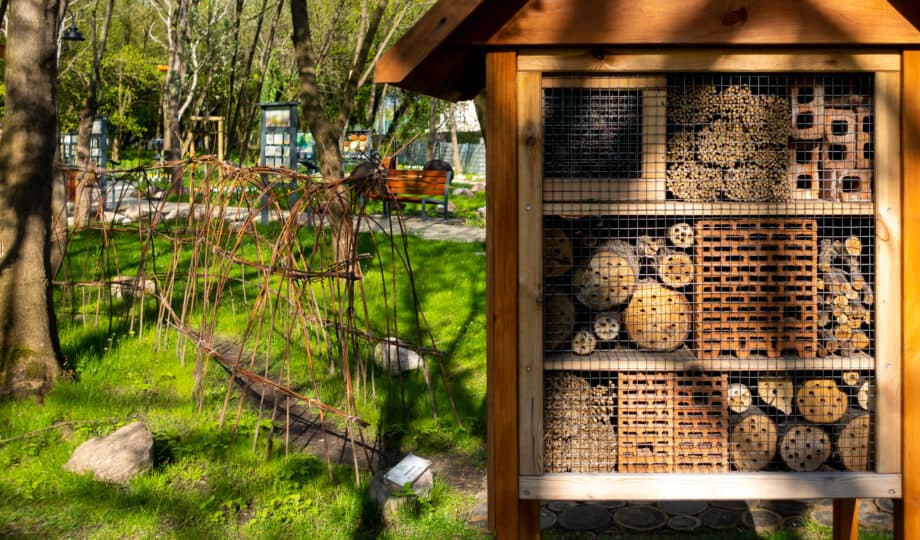Beauty and the bees

“Have you built the conservation areas of the future?”Housing Minister Kit Malthouse MP speech to the Housing Market Intelligence (HMI) conference 2018.
Talk of beauty in the built environment has seen somewhat of a renaissance.
From work by Respublica, to more recent contributions by Create Streets and Policy Exchange, beautiful buildings and their benefits have rarely enjoyed such prominence in policy debate. Indeed, beauty forms a key underlying point of reference in the driving government slogan: “More, Better, Faster”, through the ongoing work of the Building Better Building Beautiful Commission.
With government plans for a new design quality toolkit and the Building Better Building Beautiful Commission taking submissions, now is clearly time for holistic thinking on what we mean by ‘beauty’, how to achieve it, and how it relates to sustainability.
The case for beauty
Beautiful buildings are, unsurprisingly, more popular. Research shows local opposition to development is much lower, and residents much happier. What exactly ‘beauty’ means to most people has also been investigated, with a general preference for more traditional, Georgian or Victorian designs.
More sustainable homes have often suffered bad press for their aesthetics. Yet ‘sustainable’ can and should be beautiful, without contradiction. Older-style buildings can often be built to higher efficiency standards, retrofitted, or have low-carbon energy installed, without dramatically changing the aesthetic.
Indeed, through green infrastructure provisions, such as street trees, landscaping and wildlife reserves, sustainability can be an indivisible component of any definition of beauty.
Green is beautiful
The value of green spaces to mental health and well being is well attested, and there is a clear link to aesthetic appreciation and perceptions of attractiveness in the built environment. This common cultural appreciation for natural features offers a valuable opportunity to design beautiful places that also support nature.
With 15% of UK species at risk of extinction, the case for action is undeniable. Yet there is also a challenge to be mindful of. According to the conservation charities, species decline in the UK has been compounded by the trends for paving over front gardens and installing plastic grass. Here an idea of ‘beauty’, the perfectly manicured evergreen lawn, is part of the problem.
Following plans to mandate net gain for biodiversity in new development, there is clearly an exciting opportunity for the sector to ensure viable, valuable habitats are successfully blended into publicly appreciated design. Likewise, there is a role for government to ensure habitat enhancements are both genuine and protected.
Realising this interconnection between beauty and nature has already begun to be explored through Berkeley Group’s recent “The Nine Concepts: Making space for nature and beauty”. The report includes a number of case studies highlighting the creation of beautiful spaces which support nature as part of holistic development.
To truly build both better and more beautifully, the ‘conservation’ areas of the future will need to truly embrace all senses of the word. They will need to both match popular perceptions of beauty and be genuinely nature enhancing; with ideally no difference between the two.
Get Involved
UKGBC is currently responding to the Building Better Building Beautiful commission. We are accepting case studies of sustainable, beautiful buildings and developments. For more information or to submit a case study, please email Philip Box.
If you have any green infrastructure case studies please send them to Robert Winch.
On 19th June we will be running a workshop for the purpose of identifying what the ambitions for the UK built environment sector should be regarding climate resilience and ecosystem services and what UKGBC can do to best enable the meeting of these ambitions. Further details on our Events and Courses page next week.
Later this year we will launch our educational Course Mail series on nature and biodiversity in the built environment. In November this year, we will be holding a masterclass on biodiversity net gain to help prepare the industry for its expected introduction into planning requirements.
See our biodiversity net gain actor and resource map here
See our report ‘Insights into Nature and Biodiversity’ here
Related
What are the environmental impacts of construction materials? An introduction to Embodied Ecological Impacts

Biodiversity Net Gain: Are you ready for the incoming legislation?

It’s net zero, naturally

COP15 and rethinking nature on new developments


